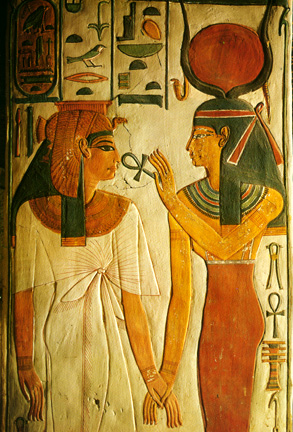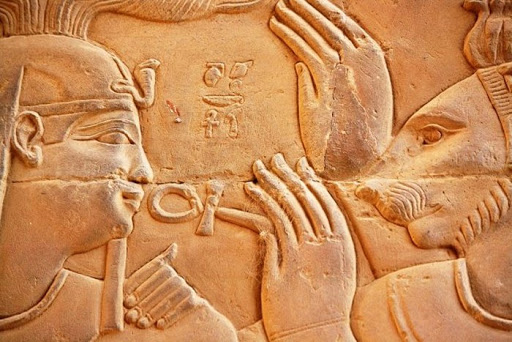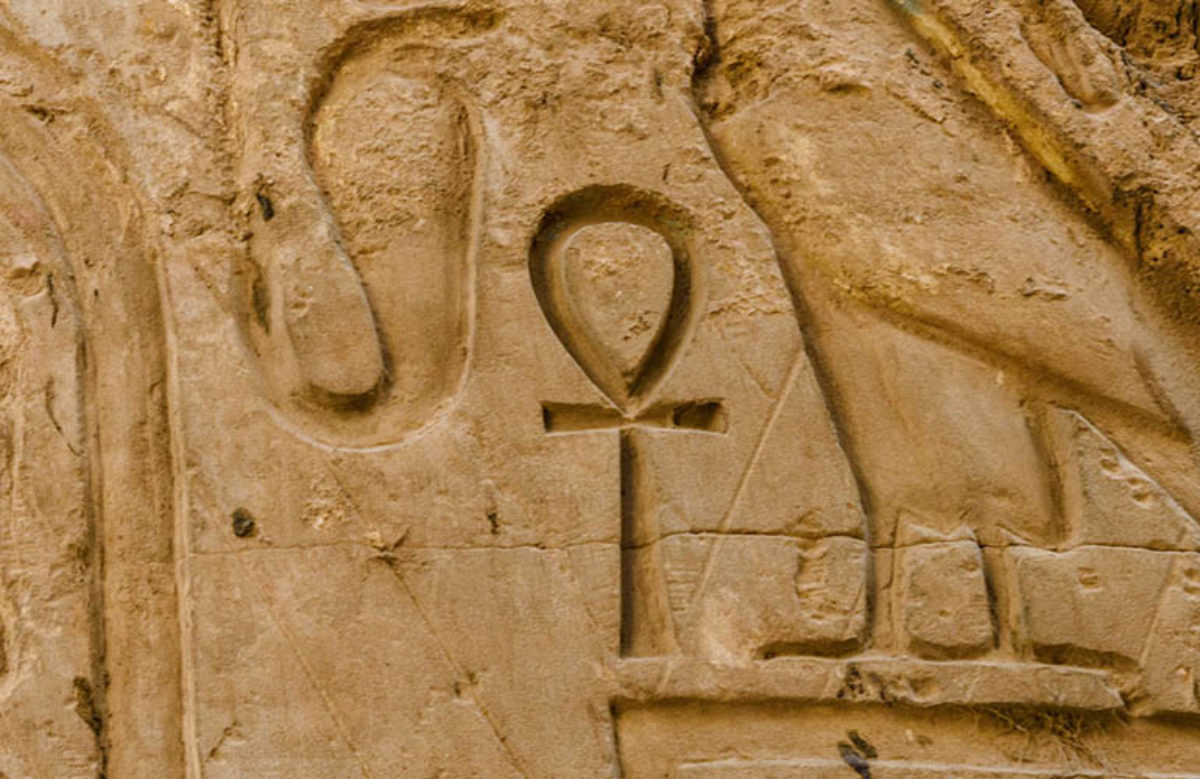The ankh is one of the most iconic and enduring symbols to emerge from the ancient world. This ancient Egyptian hieroglyph, often referred to as the “key of life” or the “cross of life”, has captivated the imagination of people for millennia. With its simple yet elegant design – a looped cross – the ankh represents the profound Egyptian beliefs about life, death, and the afterlife.
In this comprehensive blog post, we’ll explore the rich history, symbolism, and cultural significance of the ankh. From its mysterious origins to its enduring influence across different civilizations, the ankh stands as a testament to the profound spirituality and cosmological worldview of the ancient Egyptians. Whether you’re a student of history, a seeker of esoteric knowledge, or simply fascinated by the symbols of the past, this post will provide you with a deeper understanding and appreciation of this captivating icon.
The Origins and Meanings of the Ankh
The exact origins of the ankh symbol remain a subject of scholarly debate, but what is certain is its deep roots in ancient Egyptian culture. The ankh first appears in the archaeological record during the Early Dynastic Period, around 3150-2613 BCE, making it one of the oldest and most enduring symbols of the ancient world.
One of the most widely accepted theories about the ankh’s origins comes from Egyptologist Sir Alan H. Gardiner. He proposed that the symbol evolved from the shape of a sandal strap, with the loop representing the ankle and the vertical post representing the sole. This theory is based on the similarity between the Egyptian word for “sandal” (nkh) and the word for the ankh symbol itself (also nkh). The idea is that because sandals were essential to daily life in ancient Egypt, the ankh came to symbolize life itself.

Another intriguing theory, put forth by Egyptologist E.A. Wallis Budge, suggests that the ankh originated from the ceremonial girdle or “knot of Isis” worn by the goddess Isis. Budge believed that the ankh represented female genitalia and fertility, aligning with its broader symbolism of life and eternal life. This theory is supported by the fact that Isis is often depicted holding the ankh, and the ankh’s early use in Egyptian history coincides with the rise of the cult of Isis.
Regardless of its precise origins, the ankh is undoubtedly a symbol of profound significance in ancient Egyptian belief systems. The hieroglyph itself translates to “life” or “breath of life” (`nh = ankh), reflecting the Egyptian understanding of earthly life as just one part of an eternal, cyclical existence. The loop at the top of the ankh was seen as a portal to the afterlife, while the vertical post represented the physical world. Together, the ankh symbolized the holistic nature of existence, where mortal life and the afterlife were inextricably linked.
The Ankh and the Goddess Isis
The ankh’s rise to prominence in ancient Egypt is closely tied to the cult of the goddess Isis. As one of the most important and influential deities in the Egyptian pantheon, Isis was associated with a wide range of attributes, including fertility, motherhood, magic, and the afterlife.

During the Early Dynastic Period and the Old Kingdom (c. 2613-2181 BCE), the cult of Osiris, the god of the dead and the afterlife, was the most popular in Egypt. However, over time, the cult of Isis, which shared similar stories and promises of resurrection and eternal life, became increasingly dominant. Isis, originally a mother goddess associated with fertility, became known as the devoted wife of Osiris, who resurrected him after his murder by the god Set.
As Isis’s worship grew, the ankh became closely associated with her. The goddess is frequently depicted holding the ankh, often placing it against the lips of the deceased to revitalize them in the afterlife. This symbolism underscores the ankh’s role as a conduit to the afterlife and a representation of the eternal cycle of life, death, and rebirth.
The ankh’s prominence in tomb paintings and inscriptions, where gods like Anubis or Isis are shown presenting the ankh to the deceased, further emphasizes its significance in Egyptian beliefs about the afterlife. The goddess Ma’at and the god Osiris are also often depicted holding the ankh, cementing its association with life, death, and the promise of eternal existence.
The Ankh in Egyptian History and Culture
The ankh’s symbolism was easily recognizable, even to those who could not read the hieroglyphic script. While it was not exclusively associated with Isis, as many gods are depicted carrying it, the ankh became more closely linked to the goddess over time, much like the djed symbol became associated with Osiris.
By the Old Kingdom (c. 2613-2181 BCE), the ankh was firmly established as a symbol of eternal life. The deceased were referred to as “ankhu” (having life/living), and caskets and sarcophagi were often decorated with the ankh and known as “neb-ankh” (possessing life).

During the Middle Kingdom (2040-1782 BCE), the word “nkh” was used for mirrors, and many hand-mirrors were crafted in the shape of the ankh. This association was not coincidental, as the Egyptians believed the afterlife was a mirror image of life on earth, and mirrors were thought to have magical properties. The ankh’s connection to mirrors further reinforced its role as a symbol of the cyclical nature of existence and the promise of eternal life.
The ankh also served as a popular amulet, worn by the living and placed among the wrappings of the deceased. These amulets, called “wedjau”, were made from various materials and believed to hold magical powers, providing supernatural benefits and protection.
The ankh’s significance continued through various periods of Egyptian history. During the New Kingdom (1570-1069 BCE), the symbol became associated with the cult of Amun and was prominently used in temple ceremonies. Even during the Amarna Period (1353-1336 BCE), when Akhenaten banned the cult of Amun and other gods, the ankh remained in use, symbolizing life through the beams of light from the solar disc of Aten. After Akhenaten’s death, his son Tutankhamun restored the old religion and retained the ankh’s significance.
The ankh remained a powerful symbol throughout Egyptian history, used by rulers like Ramesses II (1279-1213 BCE) and continuing to appear in inscriptions and tombs. Its enduring presence in Egyptian culture is a testament to the profound impact it had on the beliefs and worldview of the ancient Egyptians.
The Ankh and Christianity

As Christianity gained acceptance in the 4th century CE, many symbols of the old Egyptian religion fell out of favor or were banned. However, the ankh remained in use, undergoing a fascinating transformation.
Scholars have noted that powerful symbols often cross cultural boundaries, and the ankh is no exception. Its symbolism of immortality and the universe was embraced by 4th-century Coptic Christians to reinforce Christ’s promise of life after death. Over time, the ankh evolved into the Christian cross, retaining its association with life and the promise of eternal life.
Today, the cross is worn by believers in Jesus Christ, much like the ancient Egyptians wore the ankh, as a symbol of faith and divine promise. This cross-cultural exchange highlights the enduring power of the ankh and its ability to transcend the boundaries of time and belief systems.
Conclusion
The ankh, with its simple yet elegant design, stands as a testament to the profound spirituality and cosmological worldview of the ancient Egyptians. From its mysterious origins to its enduring influence across different civilizations, the ankh has captivated the imagination of people for millennia.
Whether you’re drawn to the ankh’s associations with the goddess Isis, its role in Egyptian beliefs about the afterlife, or its fascinating journey into the realm of Christianity, this symbol continues to fascinate and inspire. As we delve into the rich history and symbolism of the ankh, we gain a deeper understanding of the ancient Egyptian civilization and the timeless human quest for meaning, purpose, and the promise of eternal life.

